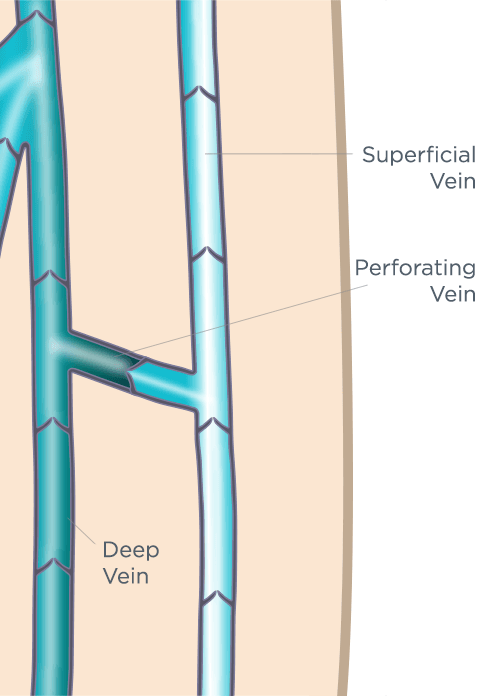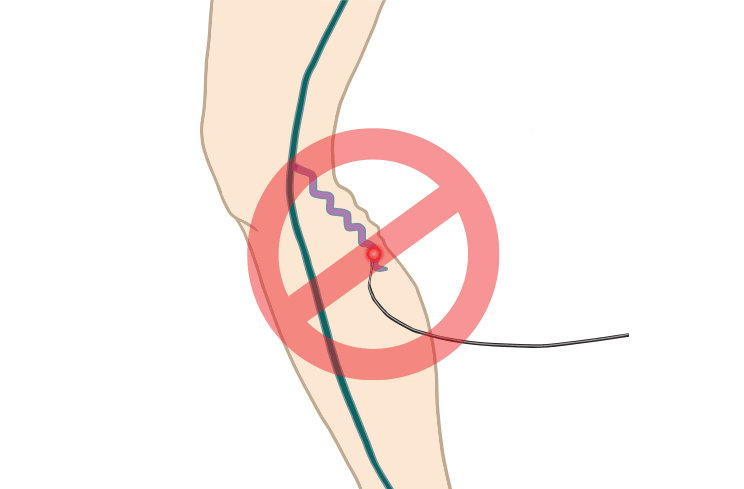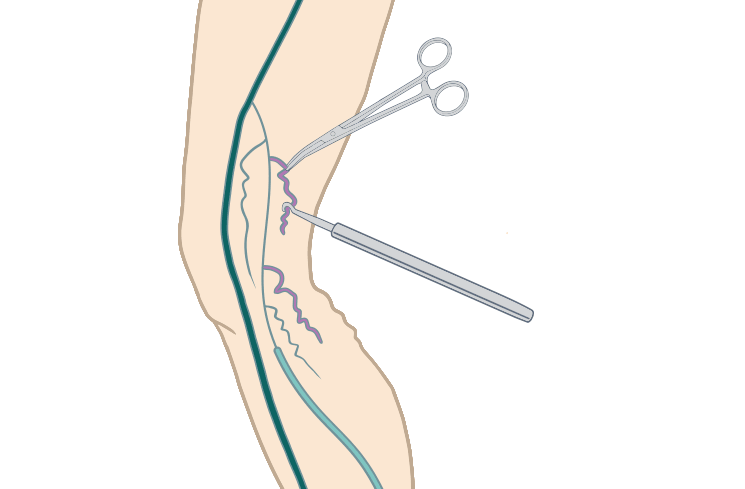Anatomy & Flow of Veins
DEEP AND SUPERFICIAL VEIN ANATOMY

ANTERIOR VEIN ANATOMY

POSTERIOR VEIN ANATOMY

PERFORATOR VEIN ANATOMY
ABNORMAL FLOW PATTERN IN VEINS WITH VEIN DISEASE
BLOOD FLOW
The normal flow pattern of blood is up the leg back toward the heart. As a result of a number of factors including family history, pregnancy and occupation, the valves malfunction. The non-working valves start flowing backward, causing the blood to pool and the veins to eventually dilate.
Venous Disease & Varicose Veins
WHAT HAPPENS TO VEINS AFTER LONG STANDING VEIN DISEASE

As a result of blood pooling in a segment of vein for a long period of time, the vein wall stretches and dilates. This segment of vein is referred to as a truncal varicose vein. The most common veins this occurs in are the long saphenous, short saphenous and accessory branches.
ABNORMAL FLOW PATTERN IN VEINS WITH VEIN DISEASE
Valves stop functioning and the walls of the veins weaken and dilate. As a result of the weakened vein walls, an otherwise normal vein is then turned into a truncal varicose vein. After a certain period of time, the truncal varicose veins create branch varicose veins. These are the veins usually seen at the surface of the skin.
Treatment of Varicose Veins
TREATMENT OF VEINS DISEASE USING THERMAL ABLATION
The non-functioning segment of vein is identified using ultrasound. The thermal ablation catheter is inserted into the vein distally in the leg. The catheter is guided up the leg to its starting point. The fiber is then activated and pulled back slowly, closing the vein behind it.
BRANCH (SURFACE) VARICOSE VEINS ARE NOT TREATED WITH THERMAL ABLATION

We do not use thermal ablation on the branch varicose veins. These veins are usually too small and tortuous. The other important reason is because it does not treat the true source of your vein disease, the truncal varicose vein.
Similar to ripping off the head of a dandelion, we cannot just treat the branch varicose veins seen at the surface of the skin. These veins would continue to reappear until the truncal varicose veins, the true source of the issue, is treated.
WHAT HAPPENS TO MY VARICOSE VEINS AFTER THERMAL ABLATION
Depending on a couple factors, mainly size, location and quantity, your surface varicose veins may close after thermal ablation. Any surface veins that remain will require a finishing treatment option, usually phlebectomy or ultrasound guided injections.
TWO TREATMENT OPTIONS FOR BRANCH VARICOSE VEINS AFTER THERMAL ABLATION

ULTRASOUND GUIDED SCLEROTHERAPY
Using ultrasound, we locate the vein under the skin and inject a solution to scar down the remaining veins.

AMBULATORY PHLEBECTOMY
Ambulatory Phlebectomy is a procedure that removes branch varicose veins through small, slit-like incisions in the skin.

